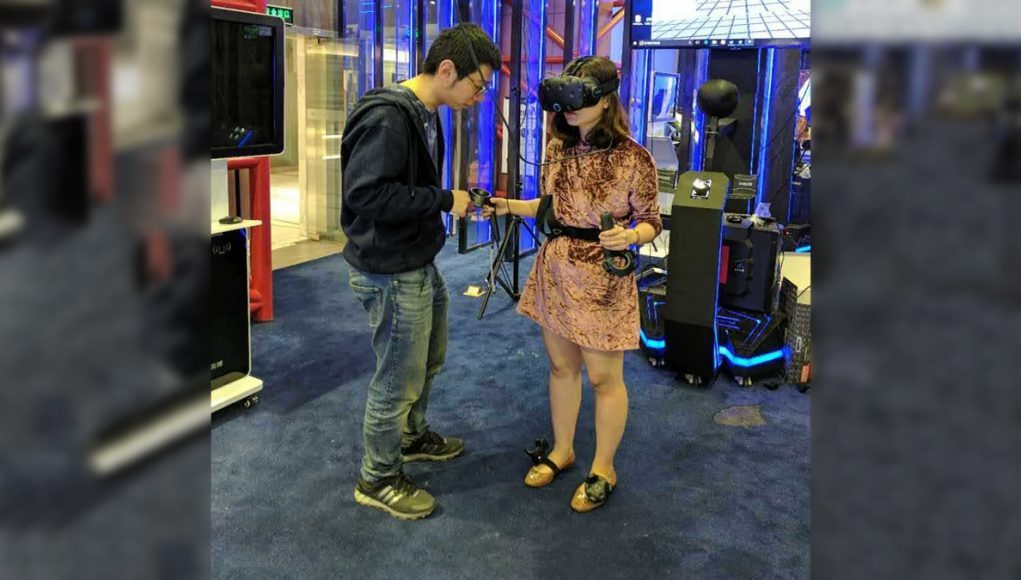HTC Vive Senior Engineer James Xiong has provided a Vive IK Demo on GitHub, which includes a reference source code and Unity demo. Using the HTC Vive headset and controllers combined with three Vive Trackers, the program uses hardware tracking and inverse kinematics to pose a virtual model that closely matches the human player.
By tracking a headset and two motion controllers held in the hands, developers are able to achieve a reasonably accurate virtual representation of the upper body. In some VR experiences, the user is able to look down and see a full body avatar, but this is often avoided, as there is too much guesswork involved in animating the lower body.
Making use of the new Vive Tracker pucks, which recently went on general sale, full body tracking can be achieved. The Vive IK Demo requires strapping a Tracker to each foot and one on the waist. This three-point inverse kinematics solution uses the combination of known ankle and hip positions gives a pretty accurate representation of the lower body with improved prediction accuracy, especially when combined with positional information present in the head and hands from the headset and controllers respectively.
As explained in the documentation, without tracking points on the knee, there are still unknowns with knee positioning, but this is largely solved thanks to common traits with human body movement; your thigh is usually pointing in the same direction as your foot when you are standing.
As the Trackers are wireless and lightweight, they can be securely attached with just a few straps, but it is recommended to use some kind of stiff panel (e.g. a square of cardboard) in order to improve tracking stability.

HTC and developers are still in the early stages of building out the Vive Tracker ecosystem, but later this year the company plans to open the device up to wider sale to businesses and consumers, beyond just developers.







